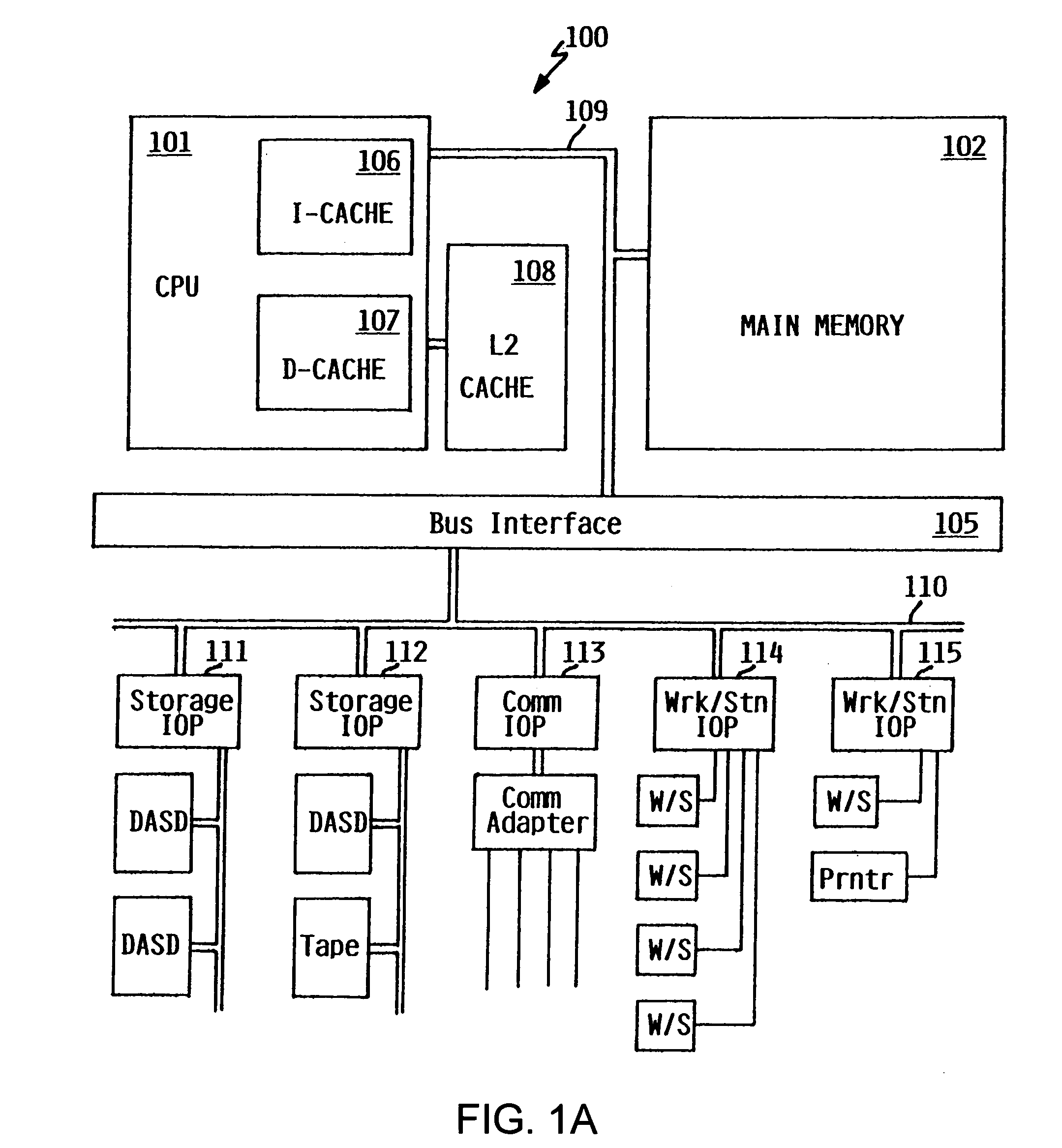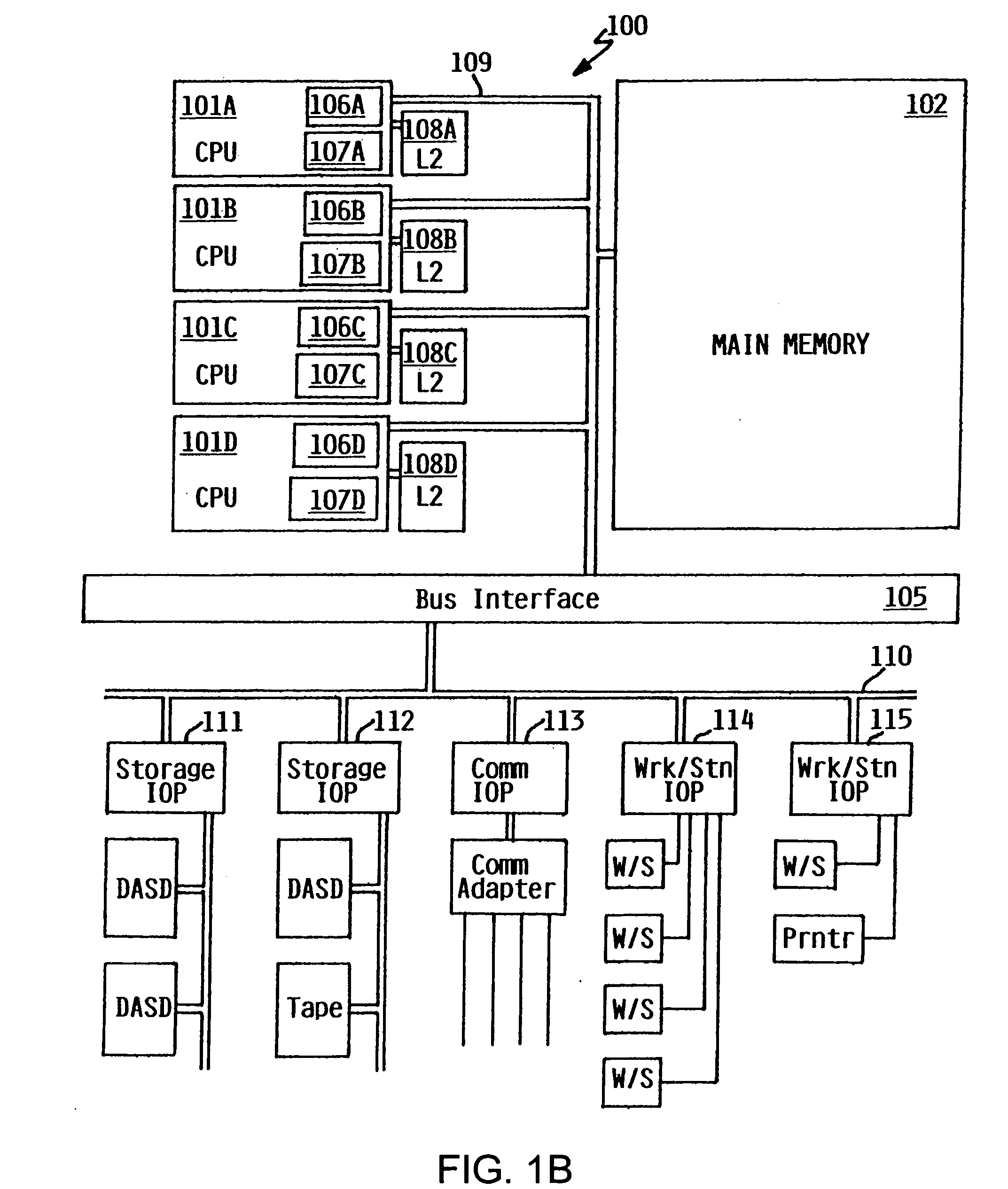Method and apparatus for testing, characterizing and monitoring a chip interface using a second data path
a chip interface and data path technology, applied in the field of digital data processing, can solve problems such as uneven degradation of signals received by receiving chips, add more layers of complexity to a system, and degrade the signal of receiving chips
- Summary
- Abstract
- Description
- Claims
- Application Information
AI Technical Summary
Benefits of technology
Problems solved by technology
Method used
Image
Examples
Embodiment Construction
[0041] Referring to the Drawing, wherein like numbers denote like parts throughout the several views, FIG. 1A is a high-level representation of the major hardware components of a single-CPU computer system 100 for utilizing an inter-chip interface, according to the preferred embodiment of the present invention. CPU 101 processes instructions and data from main memory 102. CPU 101 temporarily holds instructions and data in a cache structure for more rapid access. In the embodiment of FIG. 1A, the cache structure is shown as separate internal level one instruction cache 106 (L1 I-cache) and level one data cache 107 (L1 D-cache), and level two cache 108 (L2 cache) closely coupled to CPU 101. However, it should be understood that the cache structure may be different; that the number of levels and division of function in the cache may vary; and that a system might in fact have no cache at all. L1 I-cache 106 stores instructions for execution by CPU 101. L1 D-cache 107 stores data (other ...
PUM
 Login to View More
Login to View More Abstract
Description
Claims
Application Information
 Login to View More
Login to View More - R&D
- Intellectual Property
- Life Sciences
- Materials
- Tech Scout
- Unparalleled Data Quality
- Higher Quality Content
- 60% Fewer Hallucinations
Browse by: Latest US Patents, China's latest patents, Technical Efficacy Thesaurus, Application Domain, Technology Topic, Popular Technical Reports.
© 2025 PatSnap. All rights reserved.Legal|Privacy policy|Modern Slavery Act Transparency Statement|Sitemap|About US| Contact US: help@patsnap.com



